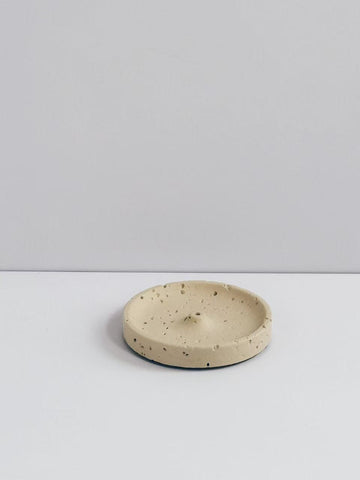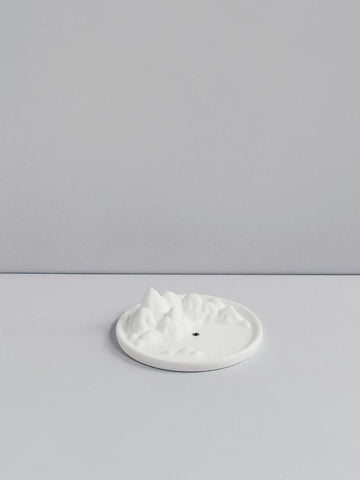Incense has long been a medium of spiritual connection, sensory enjoyment, and cultural expression in Asia. However, when one searches for "incense" or "traditional incense" online or browses through social media, Japanese incense often dominates the scene. Brands like Shoyeido and Baieido are well-known among incense enthusiasts in the West.
Yet, this raises a question: Why is Japanese incense more prominent globally, even though Chinese incense culture is older and arguably more profound? More importantly, what constitutes Chinese incense, and how does it differ from its Japanese counterpart?
Let's delve into the origins, historical developments, and artisanal differences between Chinese and Japanese incense. We'll also explore how brands like Memoricall and Kin Objects are reintroducing traditional Chinese incense to the global audience.
Origins: China as the Cradle of Incense Culture
Chinese incense boasts a history spanning over two millennia. As early as the Han dynasty (206 BCE–220 CE), incense was integral to spiritual rituals, medicine, meditation, and daily life. By the Tang and Song dynasties, incense had evolved into a refined cultural art—one of the "Four Arts of the Scholar" alongside music, calligraphy, and painting.
In contrast, Japanese incense culture began during the Nara period (710–794 CE), when Japan adopted Chinese Buddhist culture and incense practices through diplomatic and cultural exchanges. This adoption led to the emergence of Kōdō (香道)—the Japanese Way of Incense.
While Japanese incense is widely celebrated today, it's essential to recognize that its roots are deeply embedded in ancient Chinese traditions.
Crafting Methods: Ran Fang vs. Xun Fang
Chinese incense primarily utilizes the Ran Fang (燃方) method. This technique employs neutral, odorless binders such as nanmu powder or elm bark powder, ensuring that the fragrance emanates solely from natural aromatic materials like agarwood, sandalwood, patchouli, spikenard, and various Chinese herbs.
Conversely, Japanese incense often employs the Xun Fang (熏方) technique, which commonly uses refined honey as a binder. While this provides a smooth burn and cohesive consistency, it often imparts a sweet undertone to most Japanese incense, regardless of the primary ingredients.
In summary:
Chinese incense emphasizes natural, complex aromas without additional binders.
Japanese incense tends to have a sweet, harmonious scent, sometimes resulting in similar fragrance profiles across different products.
Formulation and Fragrance Profiles
Chinese incense makers adhere to the ancient principle of “Jun-Chen-Zuo-Shi” (君臣佐使)—a formulation that balances primary, supporting, harmonizing, and guiding ingredients. Each blend is tailored based on season, purpose, and material interaction, resulting in incense that is deeply layered and functional, often with health benefits.
Japanese incense, on the other hand, frequently leans towards floral and fruity themes, combining ingredients like agarwood, sandalwood, benzoin, frankincense, and borneol with aromatic flavor notes such as citrus or cherry blossom. Many formulations share similar structures, designed primarily for emotional comfort and aesthetic pleasure.
Use of Essential Oils and Synthetic Additives
A significant divergence lies in the approach to fragrance additives:
-
Japanese incense, including premium varieties, often incorporates essential oils or synthetic fragrances to achieve consistency and appeal. Different quality grades utilize varying oil compositions.
-
Chinese incense artisans pride themselves on avoiding such additives. The use of essential oils or synthetic enhancers is often viewed as compromising the craft's integrity. In traditional Chinese incense-making circles, inquiring about the presence of essential oils might be considered inappropriate.
This fundamental difference reflects cultural values: Japan emphasizes packaging and reproducibility, while China focuses on natural resonance and authenticity.
Visual Differences
-
Japanese incense sticks are typically colorful, polished, and uniform, reflecting mass production and brand identity.
-
Chinese incense tends to be neutral-toned, showcasing the raw nature of its herbal and wood-based ingredients.
Despite appearances, the subtler Chinese incense often contains more complex formulations and rarer ingredients, such as 奇楠 Qi Nan (Kyara), Old Mountain Sandalwood, Southern Atractylodes, and Spikenard.
Cultural Expression
Japanese incense culture has evolved to align with modern minimalism—light, clean, and ideal for compact living spaces. It harmonizes with Zen concepts and self-care rituals popular in the West.
Chinese incense, however, is ritualistic, spiritual, seasonal, and even medicinal. It embodies the balance between heaven, earth, and humanity, serving not just as a pleasant aroma but as a means to connect with time, memory, and healing.
While this depth might seem "too profound" for casual users, it also means Chinese incense holds unique potential in wellness, mental health, and traditional herbal therapy realms.
Why Japanese Incense Leads in the Global Market
-
Early Export Strategy: Japanese brands have been exporting incense since the 20th century, featuring English packaging, strong branding, and lifestyle marketing.
-
Clear Positioning: Products are neatly categorized by mood (e.g., Relaxing, Fresh, Meditative), enhancing accessibility.
-
Cultural Fit: Japanese aesthetics resonate with global consumers seeking calm, minimalism, and ritual.
Meanwhile, Chinese incense remained focused inward—on traditional craftsmanship, herbal purity, and spiritual continuity. For many years, there was limited effort to explain Chinese incense to international consumers.
Reawakening Chinese Incense: Memoricall and Kin Objects
Today, the landscape is shifting. Emerging brands like Memoricall are actively reintroducing the essence of Chinese incense to the world.
With a commitment to natural ingredients, wood-based complexity, and the philosophy that “The Sense of Smell is Loyal to Memory,” Memoricall represents a new-generation brand honoring ancient Chinese incense traditions in a contemporary format.
Prior to Memoricall, pioneers like Kin Objects laid the groundwork by presenting elegant Chinese incense sets that blend form and function, aiding Western audiences in rediscovering the serenity of Chinese fragrance rituals.
Though the two brands are now competitors in the global incense space, they share the mission of spreading awareness of Chinese incense, each bringing their unique perspective and product design to the international stage.
Final Thoughts
Both Chinese and Japanese incense hold immense value, each reflecting their culture’s relationship with nature, ritual, and emotion.
For those inquiring "what is Chinese incense made of?" or seeking incense that transcends mere scent to encompass tradition, healing, and memory, Chinese incense offers a deeper, richer experience.
By understanding its roots and appreciating its artistry, we can begin to restore balance in the global perception of incense, giving Chinese incense the recognition and appreciation it truly deserves.









